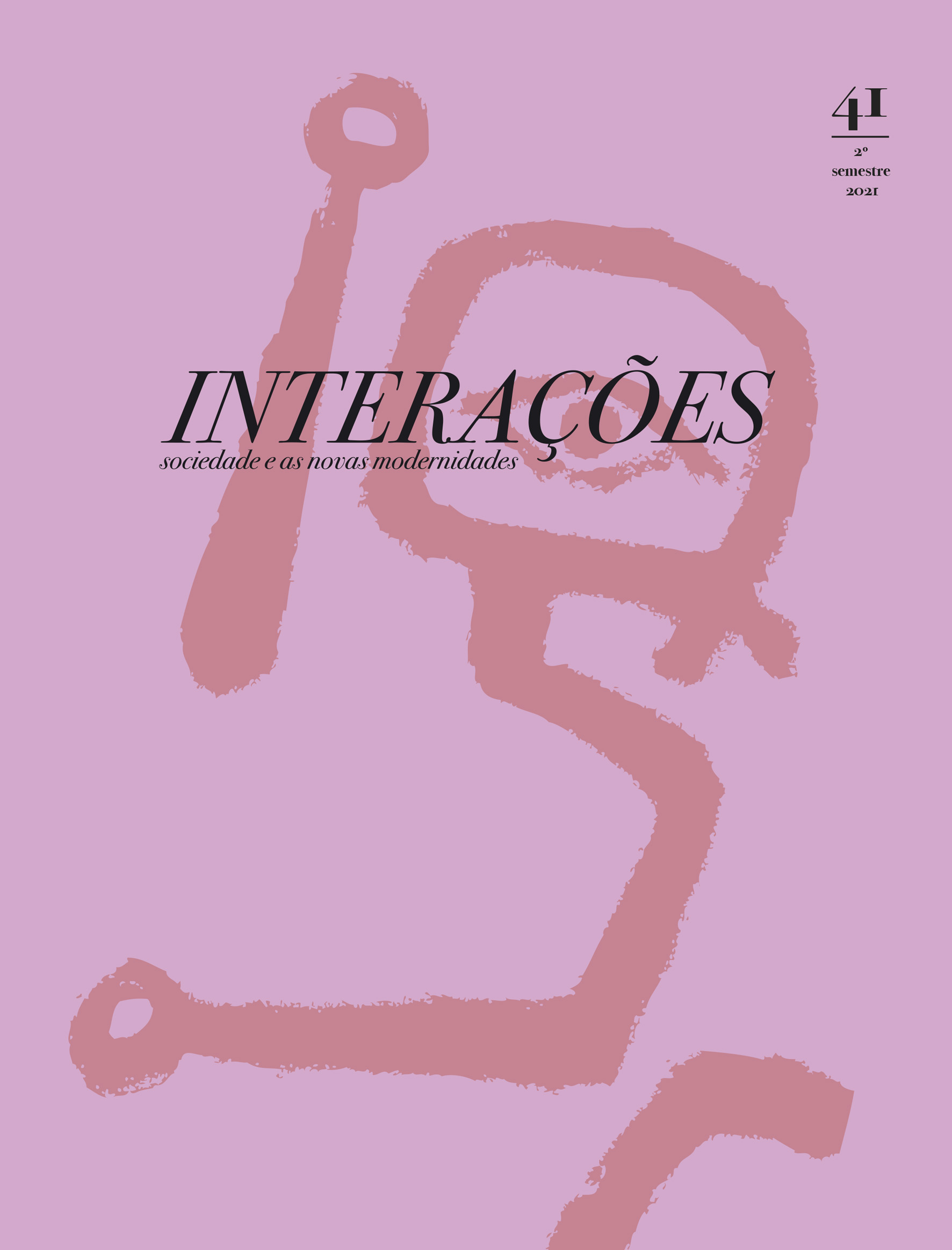Contributions to a semiotics of religion: the semiosis from sign to meaning
DOI:
https://doi.org/10.31211/interacoes.n41.2021.a8Keywords:
Culture, Religious experience, Semiosis, Semiotics of religion, SignAbstract
This article approaches theoretically the religious experience in toto. Considering the semiotics applied to religion, contributions to understand and recognize the relevance of this discipline are proposed. Such approach to the semiotics of religion justifies the aim of the article: to understand the meaning structures of religious experiences. These experiences are diverse, intimate, subjective, but all have an idea of the "transcendent" as a referent and they are based on structures of meaning, expressions, and representations of the sacred, forms, uses and interpretations of religious signs, systems of collective thought and symbolic action. It is intended to advocate that: 1) the semiotics of religion is an interdisciplinary branch of social sciences and humanities and a sort of semiotics of culture; religion is a form of culture, as well communication and social meaning; 2) religion is a semiotic phenomenon; it is sustained by signs, representations, processes of signification and cultural construction of the world, without which there could be no religion. This is followed by a conceptual, theoretical strategy of critical discussion of the structures of meaning on which manifest culture is based through what we say or do, the way we behave and the attitude we have towards signs.
Downloads
References
Barthes, R. (1991). Mythologies. New York: The Noonday Press.
Berger, P., & Luckmann, T. (1991). The social construction of reality. London: Penguin Books.
Bolzano, B. (1972). Theory of science. Berkeley: University of California Press.
Cassirer, E. (1954). An essay on man: An introduction to a philosophy of human culture. New York: Doubleday Anchor Books.
Cassirer, E. (1972). La philosophie des formes symboliques. Paris: Les Éditions de Minuit.
Devereux, G. (1979). Fantasy and symbol as dimensions of reality, in R. H. Hook (ed.) Fantasy and symbol: Studies in anthropological interpretation (pp. 19-31). London: Academic Press Inc.
Eco, U. (2001). A estrutura ausente [The absent structure]. São Paulo: Editora Perspectiva.
Eco, U. (2007). Tratado geral de semiótica [General treatise on semiotics]. São Paulo: Editora Perspectiva.
Eliade, M. (1972). Tratado de historia de las religiones [Treatise on the history of religions]. México: Ediciones Era.
Eliade, M. (1987). The sacred and the profane. New York: A Harvest Book.
Fiske, J. (2002). Introduction to communication studies. London: Routledge.
Foster, M. (1994). Symbolism: the foundation of culture. In T. Ingold, Companion encyclopedia of anthropology: Humanity, culture and social live (pp. 366-395). London: Routledge.
Gurvitch, G. (1961). Morale théorique et sciences des moeurs. Paris: Presses Universitaires de France.
Gurvitch, G. (2001). Sociology of law. New Jersey: Transaction Publishers.
Hall, E. (1966). The hidden dimension. New York: Doubleday.
Hartley, J. (2004). Communication, cultural and media studies: The key concepts. London: Routledge.
Kreinath, J. (2006). Semiotics, in J. Kreinath, J. Snoek & M. Stausberg (eds.), Theorizing rituals: Issues, topics, approaches, concepts. (vol. 114-1). Leiden: Brill.
Lotman, Y.(2005). On the semiosphere. Sign System Studies (33-1), 205-226.
Morris, C. (1971). Writings on the general theory of signs. The Hague: Gruyter Mouton.
Otero, J. C. (2003). Estética y culto iconográfico. Madrid: Biblioteca de Autores Cristianos.
Peirce, C. (1978). Collected papers. (5 vols.) Cambridge, Massachusetts: Harvard University Press.
Ricoeur, P. (2004). The conflict of interpretations: Essays in hermeneutics. London: Continuum.
Rocher, G. (1998). Sociologia geral: A ação social [General sociology: Social action]. Lisboa: Editorial Presença.
Rodrigues, A. D. (2011). O paradigma comunicacional: História e teorias [The communication paradigm: History and theories]. Lisboa: Fundação Calouste Gulbenkian.
Saint Augustine (1991). De dialectica. Bucuresti: Humanitas.
Saint Augustine (2014). Confissões [Confessions]. São Paulo: Paulus Editora.
Saussure, F. (1916). Cours de linguistique générale. Paris: Editions Payot.
Steiner, G. (1971). In bluebeard’s castle: Some notes towards the re-definition of culture. Yale: Yale University Press.
Steiner, G. (2013). Real presences. New York: Open Road Integrated Media.
Todorov, T. (1979). Teorias do símbolo [Symbol theories]. Lisboa: Edições 70.
Ward, K. (2007). Deus e os filósofos [God and the philosophers]. Cruz Quebrada: Estrela Polar.
Whitehead, A. (1927). Symbolism: Its meaning and effect. Virginia: University of Virginia.
Wittgenstein, L. (1996). Philosophical investigations. Oxford: Blackwell.
Yelle, R. A. (2013). Semiotics of religion: Signs of the sacred in history. London: Bloomsbury.
Downloads
Published
How to Cite
Issue
Section
License
Copyright (c) 2021 Paulo Barroso

This work is licensed under a Creative Commons Attribution-NonCommercial 4.0 International License.
The copyright of published works is retained by the author who grants Interações the original publication right. The published article can be used freely for educational, non-commercial purposes, in accordance with the Creative Commons License - Attribution-Non-Commercial 4.0 International, provided that the author, the title of the article, the title and number of the journal are cited together with the URL or DOI of the article.



